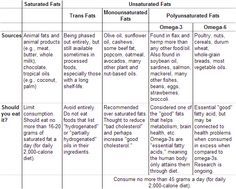
Shelf life of a protein shake
The shelf life of a protein shake is a critical factor to consider for those who regularly consume these popular nutritional supplements. Whether you are an athlete, fitness enthusiast, or simply looking to increase your protein intake, understanding the shelf life of protein shakes is essential to ensure their safety and efficacy. In this article, we will explore what determines the shelf life of a protein shake and provide some tips on how to store and maximize the longevity of these products.
Protein shakes are typically made by mixing protein powder with water, milk, or other liquids. The primary ingredient in these shakes is the protein powder, which is derived from various sources such as whey, casein, soy, or plant-based proteins. Protein powders are dehydrated and processed to extend their shelf life, but once they are rehydrated in liquid form, they become susceptible to spoilage.
The shelf life of a protein shake can vary depending on several factors, including the quality of the protein powder, the ingredients used, and the storage conditions. Most protein shake manufacturers provide a "best by" or "expiration" date on their products, indicating the period within which the shake is expected to retain its quality. It is important to note that this date is an estimate and not an exact indicator of when the shake will spoil.
One of the key factors affecting the shelf life of a protein shake is the presence of moisture. Moisture can promote the growth of bacteria, mold, and other microorganisms, leading to spoilage and potential health risks. When preparing a protein shake, it is crucial to use clean and dry utensils and ensure the liquid used is also free from contaminants.
Another factor to consider is the storage temperature. Protein shakes should ideally be stored in a cool, dry place away from direct sunlight. High temperatures can accelerate the breakdown of the proteins, decrease the nutritional value, and increase the risk of spoilage. Refrigeration can help extend the shelf life of a protein shake, especially once it has been prepared. It is recommended to consume refrigerated protein shakes within 24-48 hours to maintain their freshness and minimize the risk of bacterial growth.
The type of protein powder used in the shake can also impact its shelf life. Whey protein, for example, tends to have a shorter shelf life compared to other types due to its higher moisture content. Plant-based protein powders, on the other hand, can be more prone to oxidation, which can affect their quality and taste over time. It is advisable to check the manufacturer's guidelines and recommendations for specific protein powder types.
To maximize the shelf life of a protein shake, here are some tips:
Check the expiration or best-by date on the protein powder container before use.
Use clean and dry utensils to prepare the shake.
Store the protein powder and prepared shakes in a cool, dry place away from sunlight.
Consider refrigerating prepared shakes, especially if you don't consume them immediately.
Avoid exposing the protein shake to extreme temperatures or fluctuations.
Inspect the shake visually before consumption. If it appears clumpy, discolored, or has an off smell, it is best to discard it.
In conclusion, the shelf life of a protein shake depends on various factors such as moisture, storage conditions, and the type of protein powder used. While protein shakes generally have a decent shelf life, it is crucial to follow proper storage practices and use them within the recommended timeframe to ensure safety and maintain their nutritional value. By understanding and implementing these guidelines, you can enjoy your protein shakes while reaping their benefits without compromising your health.